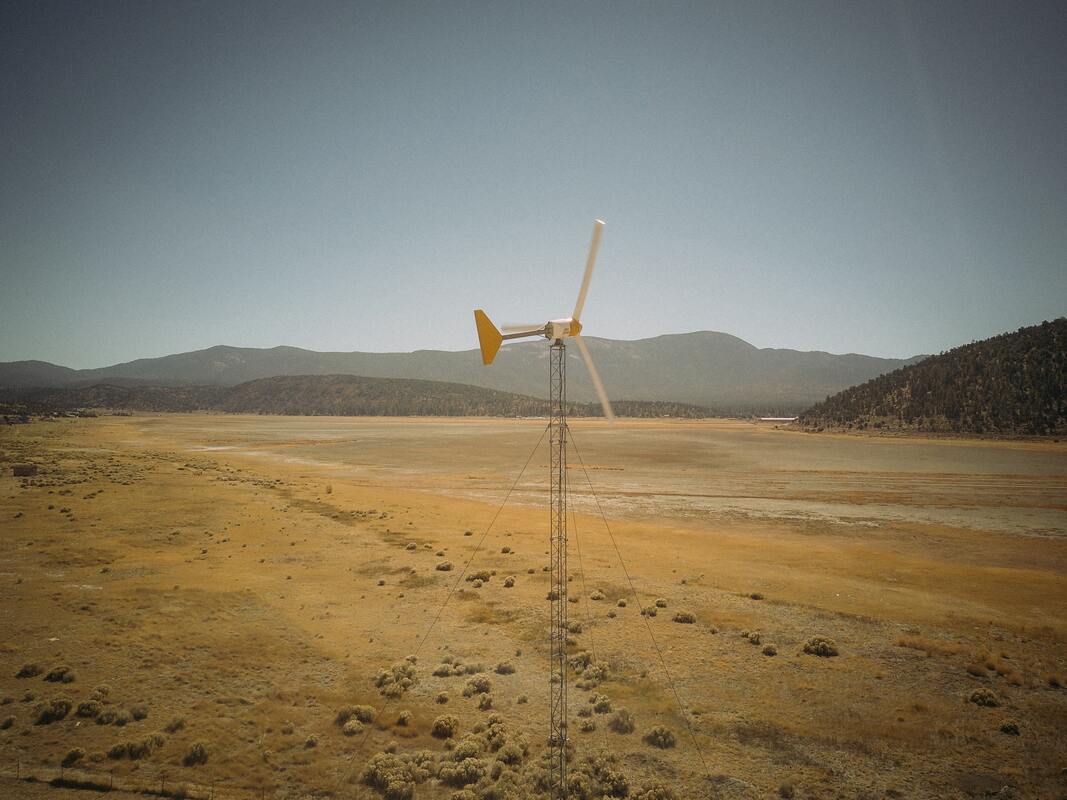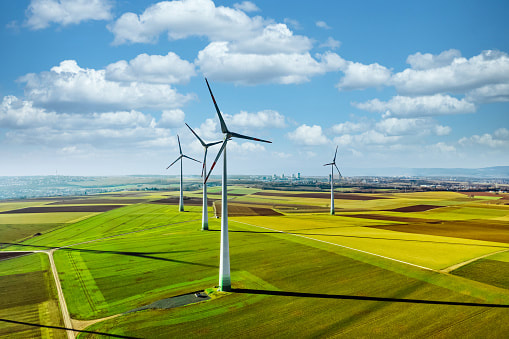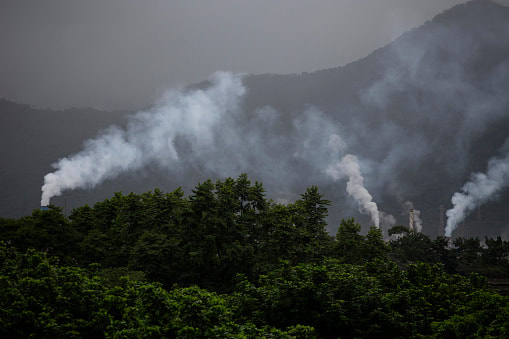|
Based in New York City, Charles Hinckley serves as managing partner and CEO of CC Hinckley, Co., LLC, a power plant finance and development business located in Old Saybrook, Connecticut. As a power plant industry professional, Charles "Chuck" Hinckley has worked on several solar and wind power projects.
A wind farm is a large, open area that has been outfitted with several wind turbines and structures that resemble very tall, somewhat futuristic windmills. These turbines have been developed to harness the power of the wind and convert it into usable energy. As one might imagine, wind farms are typically set up in locations that receive consistent and strong winds. Wind farm acreage can be used for several additional purposes, including traditional farming. This is fortunate, as large wind farms can occupy hundreds of miles. The Roscoe wind farm (RWF) project represents the largest onshore wind farm in the United States and the world. Located south of Abilene, Texas, the farm occupies 100,000 square acres and features nearly 630 turbines of various makes and models. RWF and other wind farms have combined to provide the United States with approximately 3 percent of its electricity.
0 Comments
Charles “Chuck” Hinckley is a New York-based executive and works as a managing partner at CC Hinckley Co., LLC in Old Saybrook, Connecticut. At the company, Charles Hinckley provides clients with investment banking services. He has a keen interest in renewable energy projects, including solar and wind power projects.
The advantages of renewable energy go beyond lowering global carbon emissions. Manufacturing, constructing, and operating renewable energy components and installations may help rural communities with limited economic possibilities. The development of wind farms generates several temporary employment opportunities. Locals who make an effort to learn new skills may be able to find work on additional wind farms in the vicinity. After completing wind projects, people may find new employment opportunities in operation and maintenance positions. Landowners may also profit from payments for the usage of their land. Since turbines have a modest footprint, farmers may still sow their crops without suffering any downtime. Revenue from wind farms helps reinvest in the local community as a whole. Setting up solar projects in rural areas can boost job opportunities. Landowners can lease or sell their land to construct solar power plants. Apart from landowners, people with small homes also can benefit from solar power. They can install solar panels on their rooftops, which helps reduce their power bills. After installing solar power plants, solar companies need workers to maintain and operate the installed plants. So, jobs are there even after installation, which boosts the local economy. Charles "Chuck" Hinckley is a New York-based finance and operational executive with many years of experience in investment, power, alternative energy, infrastructure, and the cleantech industry. He was previously the managing director of Marathon Capital, an investment bank in New York City. Charles Hinckley founded and is the managing partner at CC Hinckley Co., LLC, an Old Saybrook, Connecticut-based company that provides investment banking, financial advisory, strategic, and management services. Since its establishment, the company has specialized in environmental, social, and governance (ESG) situations.
Environmental, social, and (corporate) governance (ESG) refers to a business approach where businesses incorporate environmental and social goals into their investments, rather than only maximizing profit for shareholders. Today, there is a growing number of environmentally and socially conscious investors and companies that are adopting this approach in evaluating prospective investments. Environmentally responsible or friendly investments consider the company's role in safeguarding the environment, for example, incorporating policies that tackle climate change and global warming. Another example is adopting alternative energy sources other than the traditional ones. It also looks at how the investment impacts land, water, air, ecosystem, and human health. Socially accountable investments focus on maintaining a healthy relationship between the company and its customers, suppliers, employees, and the business environment it operates. Companies that incorporate this practice into their investments focus on product integrity, improving brand loyalty as well as protecting human rights. Governance on the other hand refers to the corporate policies and administration of an organization. It deals with remuneration for executives, tax strategies, board diversity, and political lobbying, among other things.
Prime-Focus Astrophotography
The prime-focus method of astrophotography entails utilizing a telescope as a long lens for a camera. The equipment needed for this method is a telescope, DSLR camera with a replaceable lens, and camera-to-telescope adapter for this procedure. Usually, an adapter would have an eyepiece-like barrel at the bottom and a broader section with a screw thread at the top.
Because the telescope is now the camera’s lens, an SLR is required to use the telescope. Therefore, the camera viewfinder must be looking through an SLR. If there is already a digital SLR, results will be seen instantly. However, because digital cameras may have problems with long exposures, getting an old mechanical SLR is better.
From the foregoing, to be ready for prime-focus astrophotography, you need a telescope, camera-to-telescope adapter, and camera. You also need a T-ring. Remove the camera’s lens and replace it with the T-ring, then place the barrel in the eyepiece holder after screwing the camera-telescope adapter into the T-ring. If one looks through the camera’s viewfinder, there should be space to look through the telescope.
There are various kinds of things one can photograph with the prime-focus technique. This includes the moon and various planets depending on the telescope’s focal length. This technique can be used to photograph such objects because of their brightness, making them far easier to capture than dull deep-sky objects.
The issue with prime focus is that one can’t do much guiding because there is nothing to look through during the exposure. A device known as an off-axis guider removes some of the light during the exposure so people can see it. With one of these, exposure time is limited only by one’s guiding and light pollution abilities.
The most difficult aspect of prime-focus photography is getting the exposure just right. The light-meter on a camera may not operate because it was not designed to work when the sky is dark. The best thing to do is take many shots with various exposure settings. Afterward, you should document the settings for every shot and compare them to the photos when they are out of the lab.
There is no need to look through any eyepieces or use camera lenses in prime focus astrophotography. The camera is integrated into the telescope, focused using the telescope’s focus mechanism, and light is directed straight to the camera sensors. Hence, the camera itself is an eyepiece. The focal length and ratio of the telescope influence the image’s width, as well as the speed with which light enters the camera.
With a smartphone, prime focus astrophotography is impossible. To take these photos, one will need a Digital Single Lens Reflect (DSLR) or Charge Coupled Device (CCD) camera. In the digital age, expert astronomers employ CCDs, as they are more sensitive to light than film. While DSLRs are more widely available, capable, and user-friendly, they may produce more noise and need longer exposures than CCDs.
The setup for each type of astrophotography is different. The same works for prime focus. All one needs is an adapter that turns the camera into an eyepiece. Each type of telescope has a unique configuration that necessitates a unique adaptor, so it is essential to understand the differences and what one’s telescope can handle.
via Blogger https://ift.tt/3qwAt5c January 14, 2022 at 11:54PM Global warming, climate change, or global climate crisis: each of these terms describes the fact that Earth's average temperature is increasing. As temperatures rise, multiple effects alter various components of Earth's climate, resulting in hotter summers, rising ocean temperatures, melting polar ice, and greater storm activity extending beyond seasonal variations in the weather.
Climate change is often characterized as a significant fluctuation in average weather conditions over several decades or more. Global temperatures rise due to human activity, and this currently affects every element of human life. As the frequency and intensity of these impacts increase, they will create--and in many cases already have created--crises for people and ecosystems worldwide. If left unchecked, these repercussions will spread and exacerbate, resulting in further wildlife extinction, water scarcity, and displacement of communities. Ninety-seven percent of scientists concur that people are responsible for climate change. Humanity's immediate consumption of fossil fuels and deforestation have resulted in dramatic increases in greenhouse gases in the atmosphere. For millennia, scientists have known that gases in Earth's atmosphere, such as carbon dioxide and methane, behave like a greenhouse, keeping some heat radiation from escaping back to space. Carbon dioxide in particular increases the temperature of the atmosphere. Carbon dioxide levels have fluctuated throughout Earth's history due to volcanic activity or the carbon cycle. Plants and animals take in oxygen and expel carbon dioxide, while microbes do the opposite. However, increases in temperature and carbon dioxide levels over the last century have been dramatic and are accelerating. Carbon dioxide emissions have reached their greatest level in 66 million years, and future warming is anticipated to be 250 times greater than the average over the last century. To avoid the worst effects of climate change, the Intergovernmental Panel on Climate Change recommends reducing carbon emissions to a level that limits global warming to 1.5 degrees Celsius (3 degrees Fahrenheit). To accomplish this, the world as a whole must commit to achieving net-zero carbon emissions by 2050. While science confirms that climate change is unavoidable, it also indicates that it is not too late to reverse the trend. This will require profound changes in every element of life, including growing food, using land, transporting commodities, and powering economies. Although technology has impacted climate change, innovative and efficient technologies can significantly cut net emissions and create a cleaner planet. Today, over 70 percent of emissions can be replaced with readily available technologies. Renewable energy is currently the cheapest source of electricity in many regions, and electric automobiles are on the verge of becoming commonplace. Meanwhile, nature-based solutions provide “breathing space” as humankind works to decarbonize the economy. These solutions enable offsetting a portion of the carbon footprint while promoting critical ecosystem services, biodiversity, access to safe drinking water, improved livelihoods, healthy diets, and food security. Improved farming techniques, land restoration and conservation efforts, and greening food supply chains (food production accounts for 25 percent of all greenhouse gas emissions) are all examples of nature-based solutions. Scalable new technology and solutions based on nature will enable the planet to become cleaner and more resilient. If governments, corporations, civic society, youth, and academia come together, they can build a green future that alleviates suffering, upholds justice, and restores harmony between people and the planet. |
AuthorNew York Renewable Energy Entrepreneur Charles (Chuck) Hinckley. ArchivesCategories |





 RSS Feed
RSS Feed
